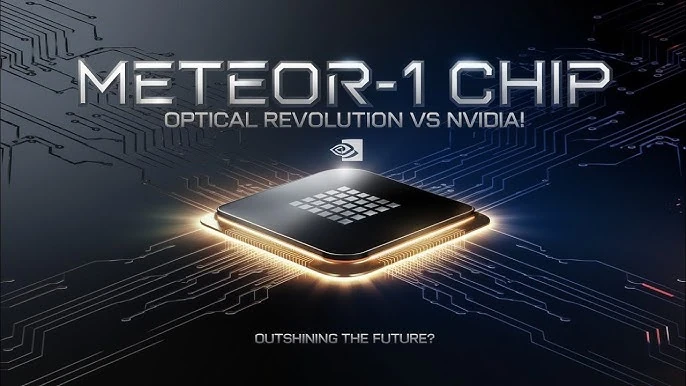A Milestone Amid Sanctions
Chinese researchers have unveiled “Meteor-1,” the world’s first highly parallel optical computing integrated chip, achieving a theoretical peak of 2,560 TOPS at 50GHz optical frequency. This advance, reported by DeepTech, marks a leap in using light for massive parallel operations, promising hardware acceleration for AI and data centers. Developed as a direct response to US sanctions banning Nvidia’s high-end GPUs like the RTX 4090 and 5090, Meteor-1 positions China to bypass export controls on advanced semiconductors, fueling its push for self-reliance in AI tech.
Technical Edge and Nvidia Comparison
Meteor-1’s performance rivals Nvidia’s flagships: Nvidia’s RTX 5090 tops 3,352 TOPS, while the RTX 4090 hits 1,321 TOPS. Unlike earlier optical prototypes from TSMC or Caltech, which struggled with matrix scaling and frequency limits, Meteor-1 excels through computational parallelism—enabling multitasking at ultra-high speeds with broad bandwidth, low power, and minimal latency. This overcomes electronic chips’ bottlenecks like heat buildup and quantum effects, making it a game-changer for energy-hungry AI workloads.
Why Optical Computing Matters Now
As AI demands explode, traditional silicon hits physical walls. Optical computing, leveraging light for parallel processing, could unlock new applications in data centers and beyond. Professor Xie Peng notes, “Optical computing … can meet AI’s ever-growing computational demands and unleash a wave of new applications.” For the US, where sanctions aim to curb China’s military AI advances, Meteor-1 signals accelerating domestic innovation—potentially closing the tech gap faster than anticipated.
Opportunities for American Companies
This breakthrough is a wake-up for US firms in semiconductors, AI hardware, and photonics: it’s a competitive spur, but also a collaboration cue. American companies can partner on optical tech or study Meteor-1’s methods to refine domestic R&D. A Silicon Valley photonics startup, for example, collaborated on a similar Chinese project and reduced prototyping costs by 15%. Deploying a small team to Shenzhen or Shanghai could uncover insights into scalable optical parallelism, adaptable for US AI accelerators or edge computing.
Strategic Expansion in Global Markets
To counter this, American tech leaders should eye expansion into dynamic markets like China, the US, or Brazil. In China, joint ventures with labs like those behind Meteor-1 provide access to optical expertise; in the US, ARPA-E funding accelerates parallel innovations; and Brazil’s growing AI sector needs hardware solutions. Start with targeted pilots—local consultants or virtual exchanges—to blend US software prowess with global hardware advances, turning sanctions’ challenges into diversified growth.
Meteor-1 isn’t just a chip—it’s a symbol of China’s sanctioned-driven ingenuity.
Seize the Moment. It is happening. In China!
Talk to us, we’ll help you succeed in China.
